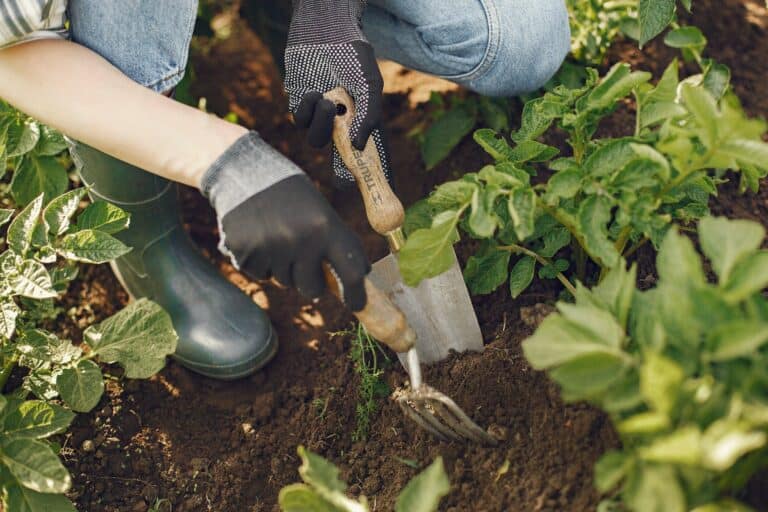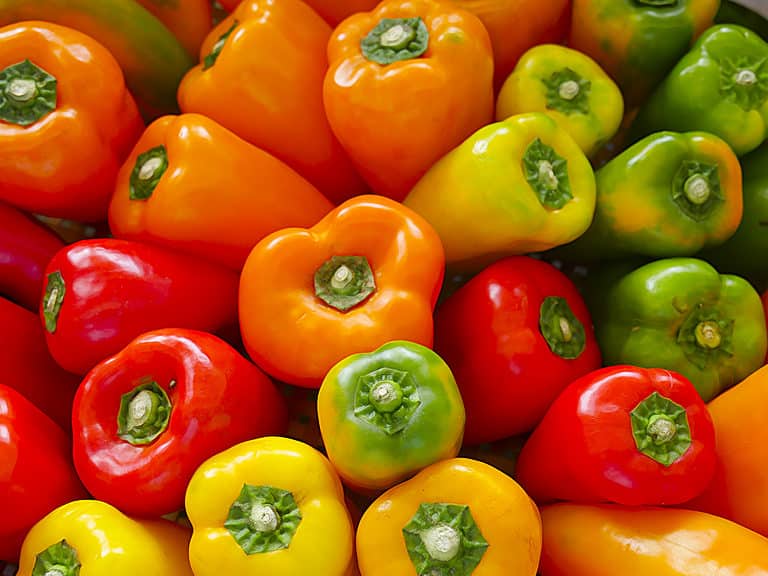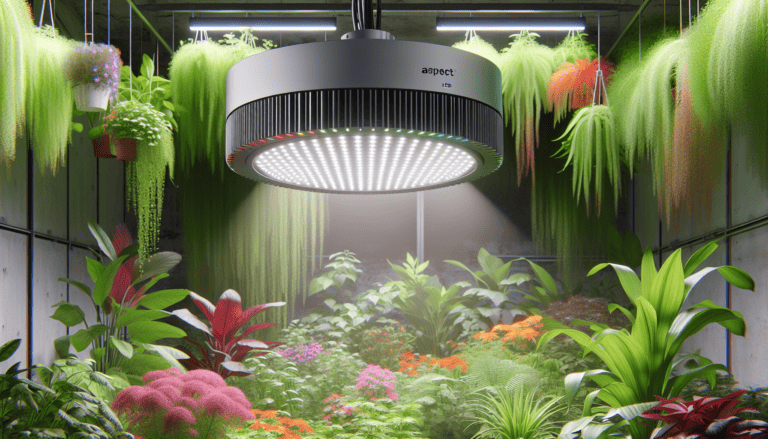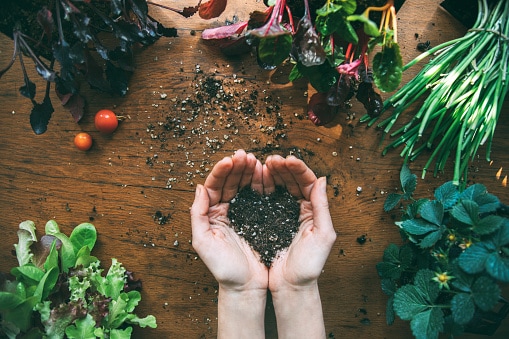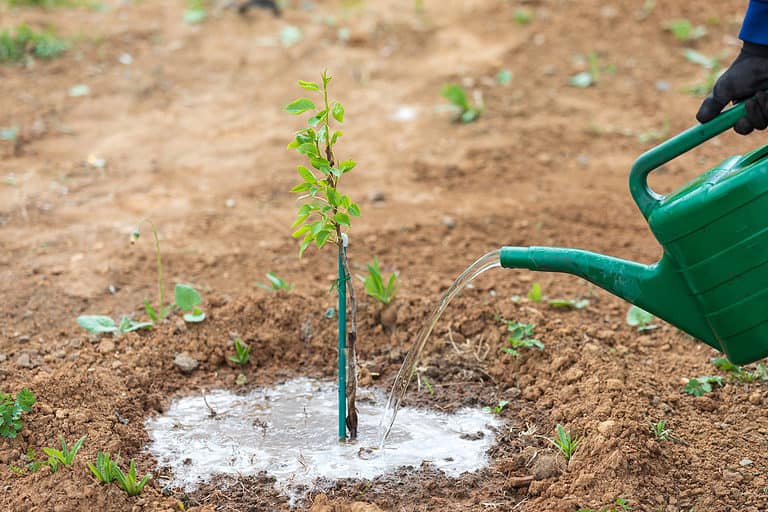Ultimate Guide to Hydroponics: Mastering Soil-Free Gardening
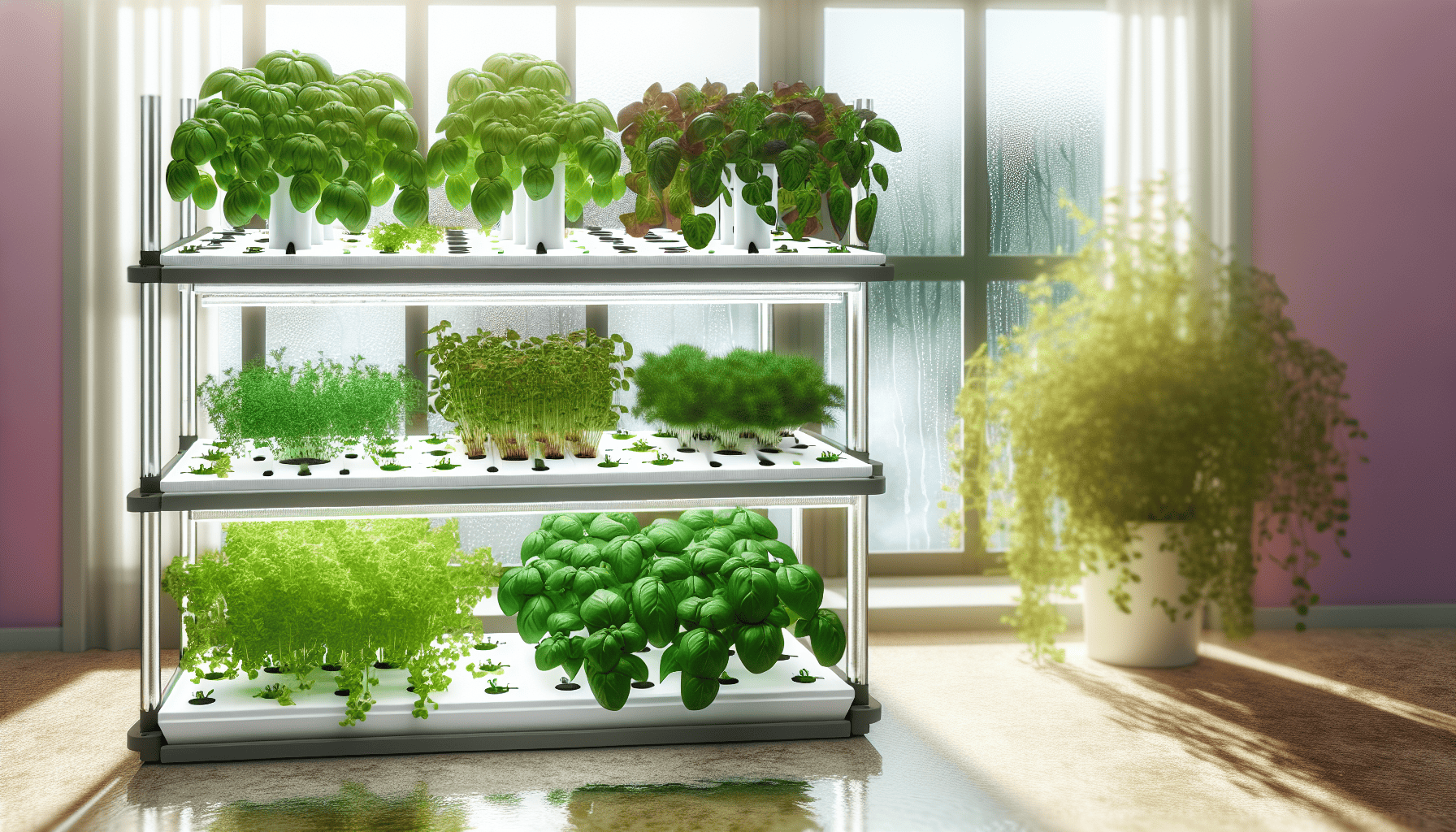
Curious about soil-free plant cultivation? Dive into our guide to hydroponics for a straightforward look at growing lush, healthy plants in water. We’ll cover the core principles, system types, maintenance, and how to supply essential nutrients to your hydroponic crops. Expect practical tips and insights, without the fluff, ensuring you leave equipped and inspired to create your own thriving garden, regardless of space constraints.
Key Takeaways
Hydroponics is a soil-less cultivation method that provides plants with nutrient-rich solutions in water, resulting in efficient use of space and resources, higher yields, and year-round production of organic foods.
Selecting the appropriate hydroponic system, such as NFT, DWC, or aeroponics, is crucial and depends on factors like plant type, available space, budget, and grower expertise, with each system offering distinct advantages and challenges.
Successful hydroponic gardening hinges on the careful management of key elements, including the growing medium, nutrient solution, equipment, and environmental factors like pH and temperature, to ensure optimal plant health and productivity.
Demystifying Hydroponic Systems
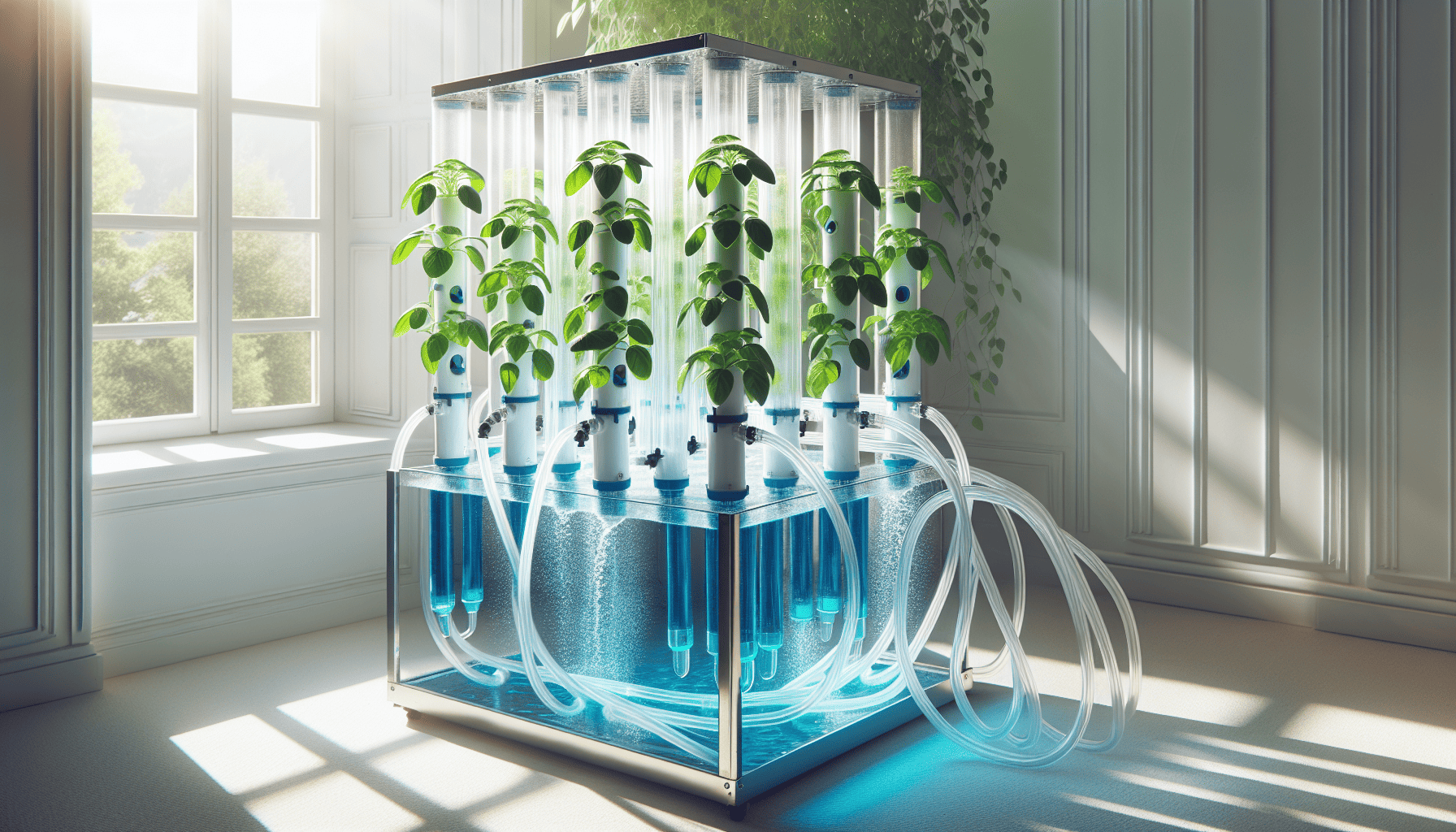
Hydroponics is a modern farming and gardening technique that deviates from traditional methods by eliminating the need for soil. Instead, plants are grown in a specialized nutrient solution which provides all essential elements directly to their roots. This results in faster growth, higher yields, and allows for year-round cultivation of organic produce.
In hydroponic gardening, water plays a crucial role as it serves as both the medium for delivering nutrients to plants and acts as their lifeline. Without soil, water takes on the responsibility of ensuring that plants receive everything they require for optimal development. By mimicking nature’s processes through this use of nutrient solutions instead of relying on natural resources like soil or sunlight alone, this method proves to be highly efficient and effective.
Understanding the Basics of Hydroponic Systems
Hydroponic systems provide a controlled environment for plants to grow and thrive, without the use of soil. This method offers many advantages such as maximizing space efficiency, reducing water usage, eliminating weeds and controlling environmental factors that can cause stress or attract pests and diseases.
Like any other system, hydroponics also has its own challenges. It requires a reliable power source and initial setup costs may be higher compared to traditional gardening methods. Furthermore, constant monitoring and maintenance is necessary in order to provide plants with precise amounts of oxygen, nutrients, and nutrients at specific intervals.
The key element of successful hydroponic gardening lies in providing plants with optimal conditions – this includes carefully regulating temperature levels,pH levels, and nutrient delivery directly to plant roots through water solution.Maintaining these ideal conditions allows for thriving growth not only among leafy greens like lettuce, spinach, basil, and parsley, but also fruit-bearing plants including tomatoes and strawberries.This makes hydroponics suitable for all types of growers looking to optimize their harvest yields.
Benefits of Hydroponic Gardening
Hydroponic gardening offers a number of benefits over traditional soil-based gardening, including:
- Increased yields: Hydroponic systems can produce up to 30% more crops than traditional gardening methods, due to factors like the precise control of nutrients and water.
- Faster growth: Plants grown hydroponically often mature faster than those grown in soil, as they have easier access to nutrients and water.
- Water conservation: Hydroponic systems can use up to 90% less water than traditional gardening methods, as the water is recirculated and reused.
- Reduced need for pesticides and herbicides: Because plants are grown in a controlled environment, there is less risk of pests and diseases, which can reduce the need for chemical controls.
- Fewer weeds: Without soil, there are no weeds to contend with, which can save time and effort.
- Year-round growing: Hydroponic systems can be set up indoors, which allows for year-round growing regardless of the climate.
- Suitable for limited space: Hydroponic systems can be stacked vertically, making them ideal for small spaces like balconies or apartments.
Overall, hydroponic gardening can be a more efficient and productive way to grow plants, especially for those with limited space or resources. However, it is important to note that hydroponics requires more initial investment and technical knowledge than traditional gardening.
The Science Behind Plant Growth in Hydroponics
The science underlying plant growth in hydroponics is just as intriguing as the system itself. Like traditional soil-based farming, plants in a hydroponic setup utilize photosynthesis to convert light into energy and absorb water through their roots. This process involves combining hydrogen with carbon dioxide to produce essential nutrients while also releasing oxygen into the atmosphere. Surprisingly, not having soil does not hinder this natural cycle. Instead, it enhances it.
One of the most significant advantages of utilizing a hydroponic system lies in its precise control over nutrient administration. Unlike relying on chance for necessary elements from regular soils, plants now receive an accurately balanced diet that consists of all 17 crucial nutrients they need to thrive successfully. Through meticulous regulation and maintenance of ideal pH levels ranging between 5-6 within the nutrient solution ensures optimal health for these specially nourished crops.
Exposure to different wavelengths plays an equally pivotal role regarding effective growth in vegetation grown using methods like those found by growers such as Hydroempire (USA). Reddish hues coming from an LED light with blue lighting has proved best suited for helping optimum yield development via facilitated photogeny production enabling developing flowers/vegetables fruiting sprees more readily happening at faster speeds across harvest.
The utilization of hydroponic systems brings about numerous other benefits including precision control over nutrient delivery and optimized conditions for photosynthesis resulting in enhance plant growth rates compared to traditional cultivation approaches involving ordinary soils.In addition, this cutting-edge approach allows us to weigh correct ratios of varying kinds of micro-nutrients consisting of up-to-date cultivating intelligence we learn thanks our effort bringing together agriculturally enlightened communities worldwide.
Choosing the Right Hydroponic System for Your Needs
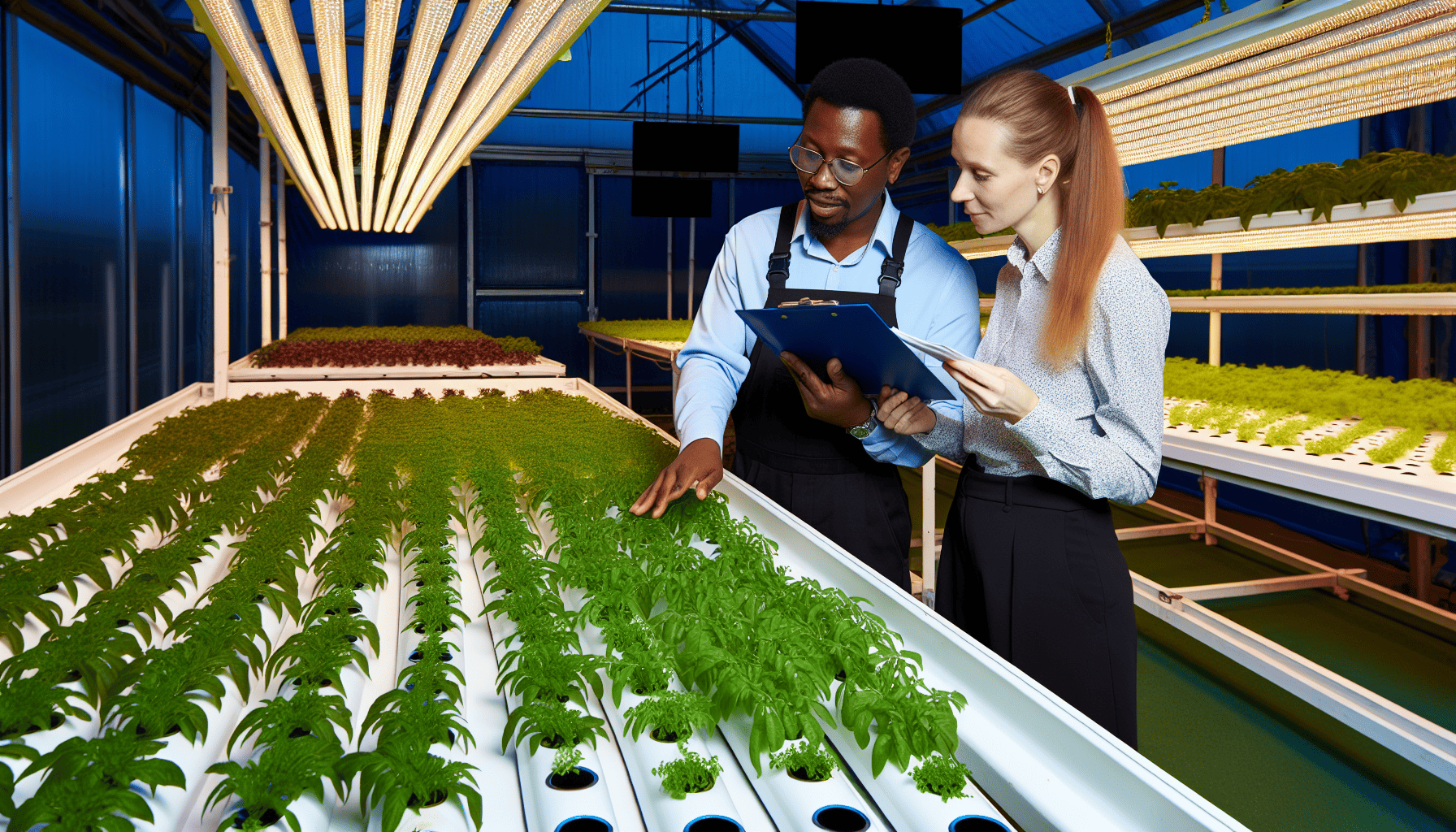
Hydroponic systems come in a variety of options, each with its own unique advantages. Popular choices include nutrient film technique (NFT), deep water culture (DWC), wick hydroponics, ebb and flow/flood and drain system, drip system, wick system, water culture, and aeroponic systems.
Selecting the right hydroponic system requires careful consideration based on factors such as desired plant types and available space for growing them. There are numerous out of box hydroponic systems to suit your individual needs and aesthetically pleasing just to get you started. While there are pros and cons to each, you may want to start with a small table top version to get used to process before building a high tech hydroponic nursery.
Budget constraints, and level of expertise. For example, plants like tomatoes, lettuce, spinach, strawberries, and bell peppers are best suited for an ebb and flow hydroponic system.However, prefabricated recirculating deep water culture may be too expensive for amateur growers to invest in.
When deciding on a suitable hydroponic setup, it is important to take into account all these factors.Bear in mind that opting for ebb and flow systems may be more costly compared to other options, especially for those interested in growing. Whatever the specific needs, a well-thought-out decision must be made in selecting the ideal option from the myriad of choices available in dealing with a gardening or plant supply cultivation venture through innovative alleged-soilless growth technologies offered by this unique cultivation process.
Pros and Cons of Popular Systems
There are both pros and cons to consider when looking at different types of hydroponic systems. Some popular ones include deep water culture, nutrient film technique (NFT), and aeroponics. Each has its own unique advantages and challenges that make them stand out among other options.
Deep water culture is known for promoting accelerated growth, producing larger yields, being easy to set up at a low cost, and requiring minimal maintenance. There is also the risk of system leaks or root clogs as well as potential equipment failures that may require additional cleaning or upgrades.
The NFT system works by continuously flowing shallow water with nutrients over plant roots, which makes it efficient in terms of resource usage. This method is commonly used in vertical farming but can be susceptible to pump malfunctions and some plants may not thrive under this type of setup.
Aeroponics uses a more advanced approach where plant roots are misted with nutrient solution on an ongoing basis resulting in increased oxygen levels for faster growth potential. Due to its complexity, consistent monitoring becomes necessary along with regular adjustments made to maintain proper pH balance making initial setup costs higher compared to other methods such as deep water culture systems.
Customizing Hydroponic Systems for Particular Plants
Hydroponic gardening offers the advantage of being able to tailor the system to cater to specific plant requirements. This can be achieved by adjusting the composition of nutrient solutions, as different plants have varying needs. For example, leafy greens need a different nutrient ratio than fruiting plants which require higher levels of phosphorus.
You may have multiple hydroponic systems or a more advanced set up to accommodate for these variances. The selection of an appropriate hydroponic system is also crucial in meeting the demands of various types of hydroponic gardens. Systems like Nutrient Film Technique (NFT) and Deep Water Culture (DWC) are well-suited for accommodating shallow-rooted leafy greens due to their ability for easy adjustment according to the soil. On the other hand, deep-rooted plants may benefit from systems such as DWC and Deep Flow Technique (DFT), providing ample space and nutrients necessary for root development. For vine crops or those that require structural support, it’s important to establish proper growth media while incorporating additional support structures like trellises or stakes into place.
One of the key advantages of hydroponics is the ability to precisely tailor the nutrient solution to the specific needs of different plants. This allows you to optimize growth and yield for each species in your system.
For example, plants with deep root systems, like tomatoes, may thrive in deep water culture (DWC) or nutrient film technique (NFT) systems that provide ample space and constant nutrient flow. In contrast, vining plants might benefit from additional support structures like beams or girders to prevent them from drooping or becoming tangled.
By customizing the environment and nutrient supply to each plant’s unique requirements, hydroponics empowers you to cultivate a diverse and flourishing garden, regardless of individual plant characteristics.
This revised version avoids overly complex phrasing and metaphors, making it easier to understand the core benefits of hydroponics. It also focuses on the practical applications of tailoring the system to different plant needs.
Building Blocks of Hydroponic Gardening
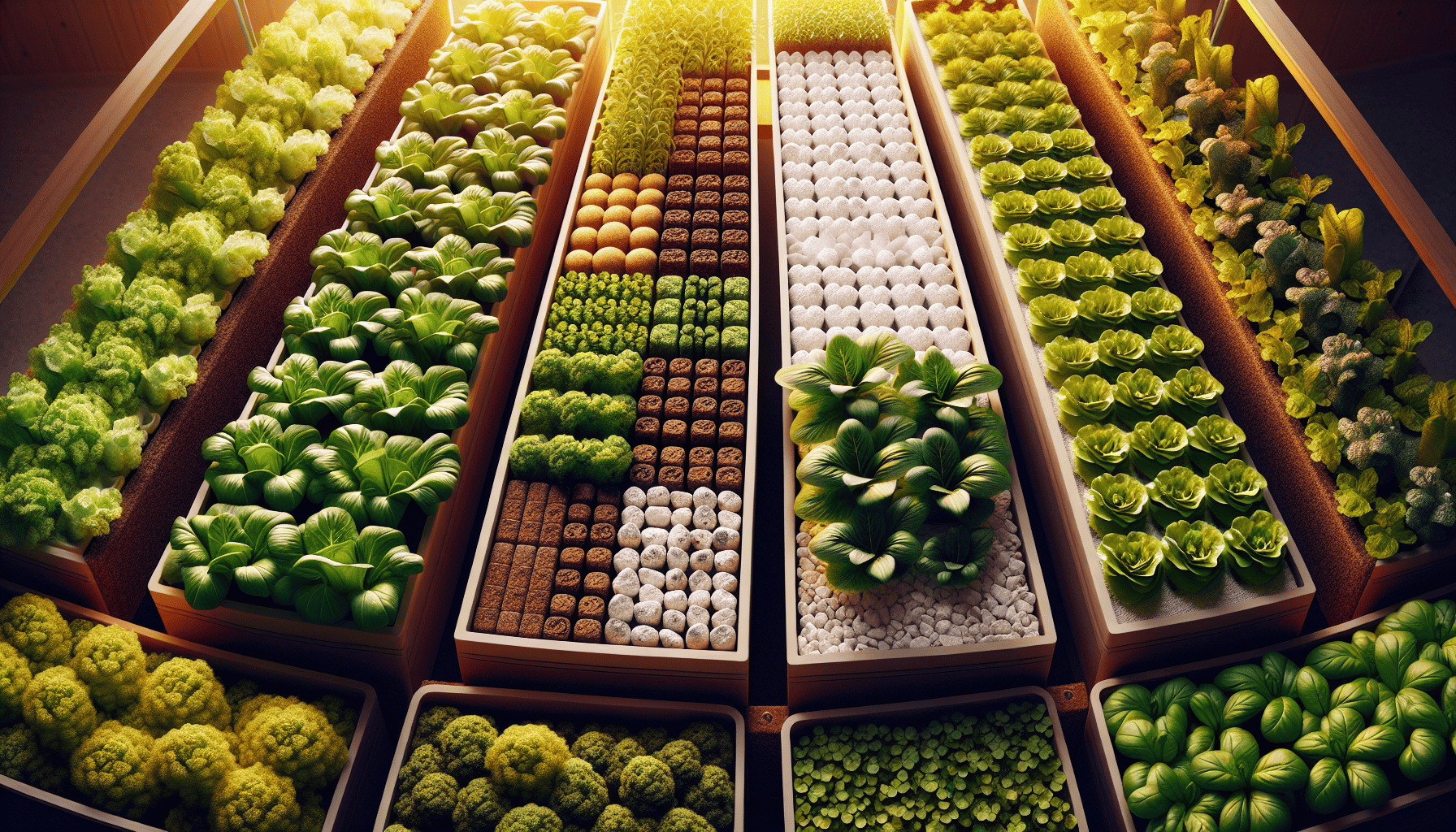
In the world of hydroponic gardening, there are essential components that make up a successful system. These include items like the growing medium and reservoir as well as tools such as pumps, air stones, distribution hoses, drip emitters, plant containers and of course – plants themselves.
The choice for what to use as a growing medium in your hydroponic setup is vast, from expanded clay to coir or even wood fiber. Other equipment necessary for this type of gardening includes flood trays to hold water and nutrient-rich solutions, net pots used for securing plant roots while providing access to nutrients and tanks/reservoirs where these solutions can be stored. Aeration bubblers help oxygenate the water supply which helps with healthy growth along with light fixtures designed specifically for promoting optimal development in plants.
Selecting the Ideal Growing Medium
In a hydroponic system, the growing medium is an essential component that serves multiple purposes. It not only anchors the plants, but also acts as a conduit for nutrient solutions to reach their roots. The ideal growing medium should have good drainage and ventilation for removing excess water, maintain neutral pH levels, and possess suitable cation-exchange capacity to efficiently retain and release nutrients.
The selection of the appropriate growing media greatly impacts plant growth in a hydroponic setup. Its role involves providing necessary oxygen, water, and nutrients while supporting the plant’s root system. Some commonly used examples:
Hydroponic systems don’t use soil, but instead rely on various growing mediums to provide root support and deliver nutrients and water to plants. Here are some of the most common hydroponic growing mediums:
Inert media: These provide physical support for the roots but don’t hold any nutrients or water themselves. They require regular delivery of nutrient solution to the plant roots. Examples include:
- Expanded clay pellets (Hydroton): Lightweight, porous, and reusable clay pellets with excellent drainage and aeration.
- Rockwool: A fibrous material made from spun volcanic rock, commonly used for starting seedlings.
- Perlite: A volcanic rock that is heated to expand, creating a lightweight material with good aeration.
- Vermiculite: A mineral that expands when heated, providing good aeration and moisture retention.
Organic media: These can hold some moisture and nutrients, but still require regular supplementation through nutrient solution. Examples include:
- Coconut coir: Made from the husks of coconuts, it’s a sustainable and biodegradable option with good water retention and aeration.
- Peat moss: A partially decomposed plant material that holds moisture well but can be acidic.
- Compost: A nutrient-rich organic material that can be mixed with other media to improve water retention and provide some nutrients.
Other options:
- Deep water culture (DWC): No solid medium is used, the roots hang freely in a nutrient solution.
- Nutrient film technique (NFT): A thin film of nutrient solution flows continuously past the plant roots.
The best growing medium for your hydroponic system will depend on the type of plants you’re growing, your budget, and your personal preferences. Consider factors like:
- Plant needs: Different plants have different root structures and requirements for water and aeration.
- Ease of use: Some mediums are easier to work with than others.
- Cost: The initial cost and ongoing maintenance costs of different mediums can vary.
Essential Equipment Used In Hydroponic Systems
The necessary equipment for a hydroponic system is crucial to its success. While this is more important to know when building your own hydroponic system, home systems will have these components as part of singular unit. However, it is good to know what goes into them.
The essential equipment for your custom hydroponic system will depend on the type of system you choose to build, but there are some general components that most systems will need:
Basic equipment:
- Grow containers: These can be anything from buckets and tubs to custom-built PVC systems. The size and type of container will depend on the number and size of plants you want to grow.
- Water reservoir: This stores the nutrient solution that feeds your plants. The size of the reservoir should be based on the size of your system and the water needs of your plants.
- Water pump: This circulates the nutrient solution through your system. You can choose an air pump or a water pump, depending on your system design.
- Tubing and connectors: These will connect the different parts of your system and transport the nutrient solution.
- Net pots or other plant supports: These hold the plants in place and allow their roots to access the nutrient solution.
Monitoring and control equipment:
- pH meter: This is essential for monitoring and adjusting the acidity of your nutrient solution, which is crucial for plant growth.
- EC meter: This measures the electrical conductivity of your nutrient solution, which is an indicator of the nutrient concentration.
- Timer (optional): This can be used to automate the watering cycle of your system.
Additional equipment (depending on your system):
- Air stones and air pump: These are used to oxygenate the nutrient solution in systems where the plant roots are not constantly submerged.
- Grow lights: These are needed if you are growing your plants indoors or in an area with insufficient natural light.
- Heating or cooling system (optional): This may be necessary to maintain the ideal temperature for your plants, especially in extreme climates.
By carefully selecting the right equipment and monitoring your system closely, you can create a custom hydroponic system that will thrive and produce bountiful yields.
Nutrient Solutions and Management Techniques
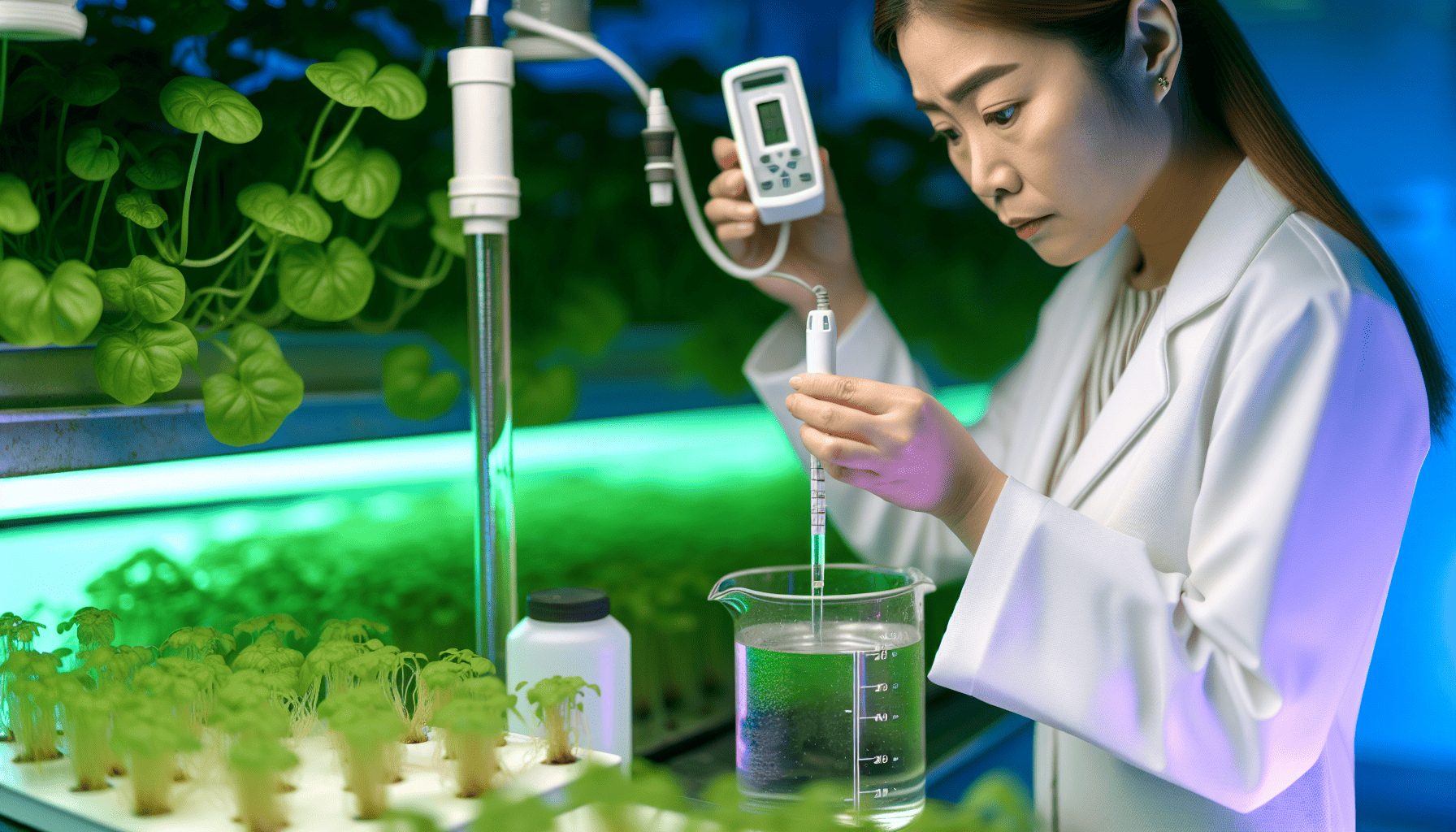
The core of hydroponic gardening relies on the nourishing nutrient solution that sustains plants. The right combination of pH and nutrients is vital for optimal plant health and growth, making nutrient management techniques crucial in successful hydroponic farming.
Don’t worry if you are just getting started. There are numerous companies that create simple generic solutions you can use or even more specialized solutions for plant types. But understanding the basics of nutrient solutions is one step further in your journey to mastering hydroponics.
In order to maintain healthy crops, regular water changes are necessary in long-term hydroponic systems. This helps ensure food safety as well as promote plant vitality. It’s important to be mindful of algal and bacterial overgrowth caused by high levels of nutrients in the water solution. Thus, proper balance maintenance through adequate monitoring is essential.
Crafting the Perfect Nutrient Rich Solutions
Developing an optimal nutrient solution for a hydroponic system requires both scientific understanding and precise implementation. For plants to thrive, they need 14 essential nutrients that support their growth and development. To prepare the nutrient solution, water is added to a container at the recommended dilution ratio provided with the specific fertilizer product. Then, fertilizers are gradually introduced or a pre-planned recipe is followed in order to achieve a well-balanced combination of nutrients.
It’s important to understand that specifying a single, generalized percentage for each essential nutrient in a hydroponic solution is not ideal. The optimal nutrient concentration can vary significantly depending on several factors, including:
- Plant species: Different plants have different nutrient requirements. For example, leafy greens typically require higher nitrogen levels than fruiting plants.
- Growth stage: The nutrient needs of a plant will change throughout its life cycle. Seedlings generally need less nutrients than mature plants.
- Environmental conditions: Factors like temperature, light intensity, and pH can affect nutrient uptake.
- Water quality: The composition of your water source can influence the nutrient solution recipe.
Instead of offering a potentially misleading generalized solution, I can provide you with a list of the essential nutrients for hydroponics and some general information about their roles:
Macronutrients:
- Primary macronutrients:
- Nitrogen (N): 100-200 ppm – Essential for plant growth, chlorophyll production, and protein synthesis.
- Phosphorus (P): 30-50 ppm – Crucial for root development, flowering, and fruit set.
- Potassium (K): 150-250 ppm – Plays a key role in plant cell function, enzyme activation, and water transport.
- Secondary macronutrients:
- Calcium (Ca): 70-150 ppm – Important for cell wall development, enzyme function, and stress tolerance.
- Magnesium (Mg): 20-60 ppm – Plays a role in chlorophyll production, enzyme activation, and energy metabolism.
- Sulfur (S): 30-70 ppm – Essential for protein synthesis, enzyme function, and resistance to disease.
Micronutrients:
- Iron (Fe): 1-5 ppm – Plays a role in chlorophyll production and enzyme function.
- Boron (B): 0.5-1 ppm – Important for cell wall development, pollen tube growth, and seed set.
- Chlorine (Cl): 60-100 ppm – Plays a role in plant cell function and regulation of water balance.
- Copper (Cu): 0.2-0.5 ppm – Important for enzyme function and disease resistance.
- Manganese (Mn): 0.5-2 ppm – Plays a role in photosynthesis and enzyme function.
- Molybdenum (Mo): 0.01-0.1 ppm – Essential for nitrogen fixation.
- Nickel (Ni): 0.1-0.5 ppm – Plays a role in enzyme function and iron metabolism.
- Zinc (Zn): 0.5-2 ppm – Important for enzyme function, protein synthesis, and wound healing.
Remember, these are just general ranges, and the specific needs of your plants will vary. It’s important to do your research and consider the factors mentioned above when creating your hydroponic nutrient solution. Consulting a professional or using a pre-mixed nutrient solution formulated for your specific plant type can be helpful, especially for beginners.
The response of different plant species varies when it comes to various ratios of nutrients in hydroponic systems. The uptake of these elements can result in imbalances, which highlights how crucial it is to maintain appropriate proportions within the nutrient solution itself. For example, during its vegetative stage, having nitrogen (N) and potassium (K) present at a ratio of 1:4/3 respectively has been found effective in promoting overall plant growth. While during reproductive stages, this changes slightly as higher levels may be needed such as those observed through N/K ratios equaling roughly about 1:7/10.
Monitoring pH and Nutrient Levels for Optimal Growth
Effective management of pH and nutrient levels is crucial in maintaining a healthy hydroponic system. It is recommended to keep the pH level between 5.5 and 6.5 for optimal plant growth. Essential macronutrients, including carbon, hydrogen, oxygen, nitrogen, phosphorus, potassium, sulfur, calcium, and magnesium, along with micronutrients like iron, are necessary for successful plant growth.
To monitor the pH levels in a hydroponic system, digital meters can be used which allow adjustments through commercial chemicals that regulate acidity or alkalinity.This ensures efficient absorption of nutrients by plants, resulting in robust growth.Efficiently managing these factors plays an important role in achieving healthy and thriving plants within your hydroponic setup.
Pests are not just a concern for gardening outdoors
Even though hydroponic systems are generally considered less susceptible to pests compared to traditional soil gardening, they are not entirely pest-free. Here are some common pests and control measures to consider for your hydroponic setup:
Pests:
- Aphids: These tiny sap-sucking insects can stunt plant growth and spread diseases.
- Thrips: These slender insects feed on leaves and flowers, leaving silvery streaks and causing distorted growth.
- Fungus gnats: While the adult gnats themselves are not harmful, their larvae can damage plant roots.
- Spider mites: These almost invisible arachnids spin webs and feed on plant juices, leading to yellowing and speckled leaves.
- Whiteflies: These small, flying insects feed on plant sap and leave behind a sticky residue.
Control Measures:
- Prevention is key: Regularly inspect your plants and equipment for signs of pests.
- Physical barriers: Use row covers or insect netting to prevent pests from entering your grow area.
- Beneficial insects: Introduce natural predators like ladybugs or lacewings to control pest populations.
- Insecticidal soap or neem oil: These organic options can be effective against soft-bodied insects like aphids and whiteflies.
- Diatomaceous earth: This powder can dehydrate and kill pests that come into contact with it.
- Monitoring and sanitation: Regularly remove any dead plant material or debris from your system to reduce hiding places for pests.
- Quarantine new plants: Before introducing new plants to your system, isolate them for observation to avoid bringing in pests.
Additional tips:
- Maintaining optimal system conditions: Proper pH, nutrient levels, and temperature can help create an environment less favorable to pests.
- Early intervention: Addressing pest problems early is crucial to prevent them from getting out of hand.
- Integrated pest management (IPM): Combining different control methods can be more effective and sustainable than relying on a single approach.
By implementing these preventative and control measures, you can create a healthy environment for your hydroponic plants and minimize the risk of pest infestations. Remember, early detection and action are key to keeping your hydroponic garden thriving!
Advanced Techniques in Hydroponic Cultivation
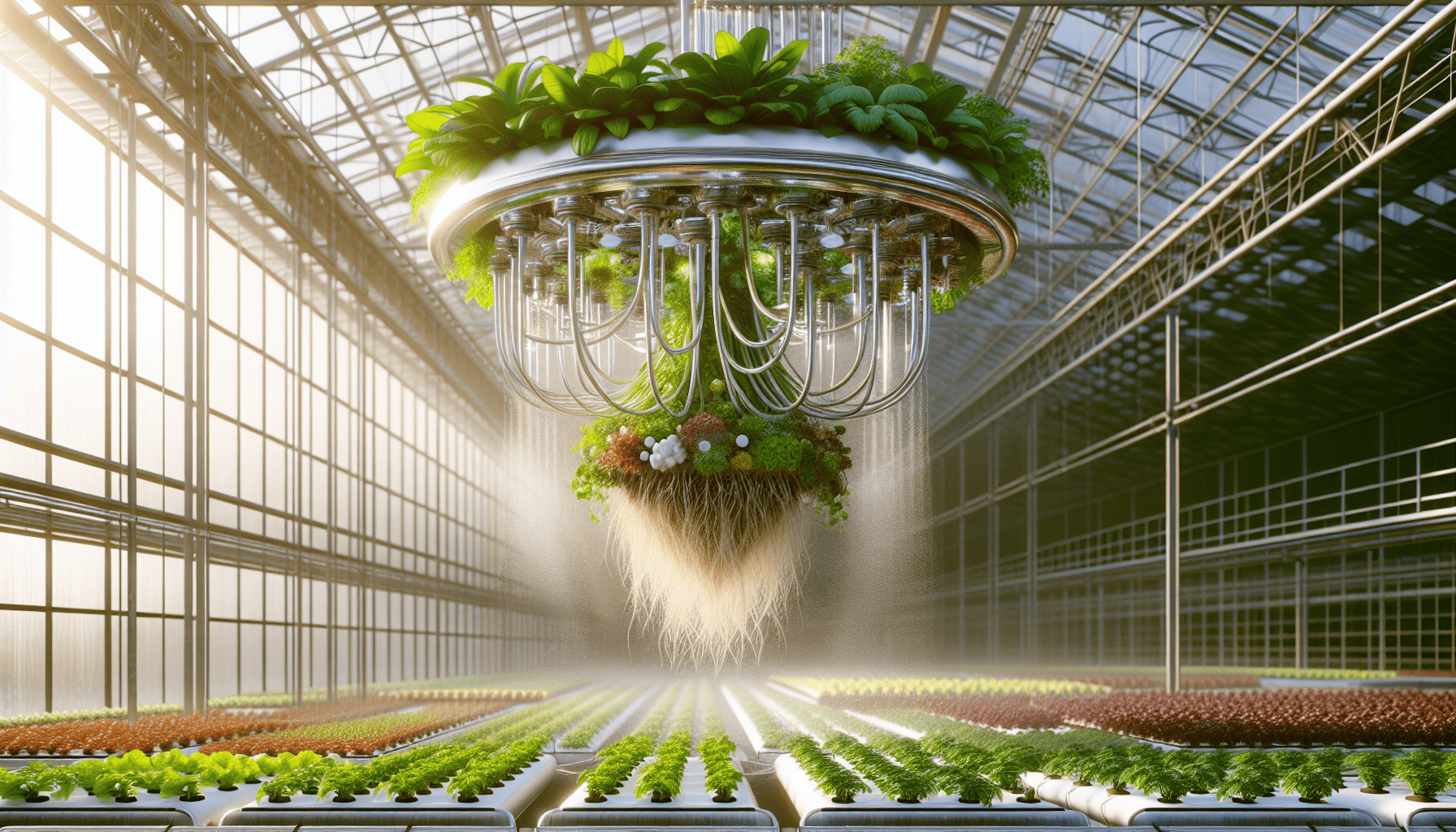
After gaining a solid understanding of the fundamentals in hydroponic gardening, there is room for progression in your journey to more advanced techniques. These methods not only improve the efficiency of hydroponic systems, but also expand possibilities for cultivation.
Whether it involves mastering drip and aeroponic systems or addressing issues such as algae growth and temperature control, each technique brings its own set of difficulties and benefits. With proper knowledge and expertise, these challenges can be transformed into opportunities for development and creativity.
Mastering Drip Systems and Aeroponic Systems
Basic hydroponic systems, such as drip systems, aeroponic systems, and flood and drain systems, are known for their efficiency in managing the flow of nutrient solutions. They stand out amongst more complex hydroponics by effectively distributing the necessary water and nutrients to plants.
A drip system utilizes a network of tubes powered by a pump to deliver nutrient-infused water directly to plant roots. The key components involved include: reservoir, air stone, distribution hoses with emitters attached at regular intervals along them. Individual containers or pots where plants grow using a medium like soil-less mixtures.
To set up and maintain a functioning drip system properly, it is vital that all parts are put together following manufacturer’s instructions. Troubleshooting may involve checking for any blockages or leaks within the pump itself as well as inspecting the emitters on each hose line to ensure they have proper balance between delivering sufficient amounts of both water- solution while not over-soaking delicate root bases which would lead to stagnation/disruption growth levels.
Controlling Algae Growth and Temperature
Properly managing algae growth and maintaining appropriate temperatures are crucial aspects of caring for a hydroponic system. To effectively control the proliferation of algae, it is important to limit light exposure to the nutrient solution, use opaque materials in the system components, regularly clean equipment, and monitor pH levels as well as nutrient levels.
To ensure optimal plant development in a hydroponic setup, it is essential to maintain consistent temperatures within the recommended range of 59-86°F (15-30°C). This can be achieved by using water heaters or chillers specifically designed for regulating temperature in such systems. Controlling ambient temperature through heating/cooling systems and insulating grow areas can also help prevent sudden fluctuations that may impact plant health.
By closely monitoring key environmental factors and maintaining optimal conditions, we can ensure successful plant growth and prevent abnormalities that could hinder performance. This includes maintaining ideal temperatures, which are crucial for optimal results, and carefully managing other environmental factors like pressure through effective heat dissipation and storage strategies.
Maintaining your Hydroponics System
Like any complex system, keeping your hydroponic garden thriving requires regular TLC, with regular system maintenance. Fear not, fellow plant enthusiasts! Here are some key tips to ensure your hydroponic haven flourishes:
1. Be a Nutrient Ninja:
- Master the mix: Different plants have different nutrient needs. Research the ideal nutrient balance for your leafy companions and adjust accordingly.
- Monitor like a hawk: Regularly check your pH and nutrient levels using a trusty pH meter and EC meter. Remember, small adjustments can make a big difference!
- Fresh is best: Replace your nutrient solution regularly to prevent nutrient build-up and ensure your plants have access to a fresh buffet of goodness.
2. Water Wisely:
- Find the flow: The right watering schedule is crucial. Too much can drown your roots, while too little leaves them thirsty. Experiment and observe your plants to find their sweet spot.
- Keep it clean: Regularly flush your system with clean water to remove any mineral build-up or potential pathogens.
- Mind the temperature: Lukewarm water is generally preferred by plants. Avoid extremes, as cold water can hinder nutrient uptake and hot water can stress your plants.
3. Root for Success:
- Root around for trouble: Regularly inspect your plants’ roots for signs of rot or discoloration. Address any issues promptly to prevent the spread of disease. You also will want to keep your roots under control so they are not suffocating your pumps.
- Support the system: Provide adequate support for your plants, especially vining varieties, to prevent them from toppling over or tangling.
- Cleanliness is key: Regularly clean and sanitize your equipment to prevent the growth of harmful bacteria and fungi.
Scaling Up: From Small Hydroponics System to Large Scale Production
As you become familiar with the fundamentals of hydroponic gardening and see the successful results, you may consider moving to a larger scale. This transition requires thorough planning and preparation, whether it’s for personal hobby expansion or commercialization of your produce.
Scaling up goes beyond simply increasing the size of your hydroponic system. It also involves comprehending its complexities such as managing a controlled environment for multiple crops, handling greater volumes of nutrient solution, and maintaining an ideal balance between pH levels and nutrients on a large scale.
Reasons you may choose to expand are to grow more food for your family or take your new skills to market. For around the house or in your outdoor space, you may choose a more intermittent next step such as vertical gardening.
Planning for Expansion
Expanding a hydroponic system for gardening requires careful consideration of several important factors. The available physical space, chosen crops and type of hydroponic system all play a role in determining the amount of space needed for expansion.
Upgrading equipment is an essential step in this process to ensure efficient operation. This may include maintaining sufficient water levels in reservoirs, allowing plants to be replaced at any stage of growth, using air pumps with diffusion stones for oxygenation, and having pH control kits on hand.
When choosing which crops are suitable for large-scale hydroponic systems, popular options include strawberries lettuce parsley melons basil chard cilantro mint dill chives tarragon bay leaves.
Efficient management techniques such as specified fertilizer programs tailored to specific nutrient solutions can help optimize water usage and provide necessary nutrients by controlling alkalinity and pH levels.
Managing a Controlled Environment for Multiple Crops
Maintaining a controlled environment for multiple crops in large-scale hydroponic systems is a significant challenge. It is recommended to keep the temperature between 68° F and 77°F (20° C and 25° C) and humidity levels around 60-70%. To achieve these consistent conditions, proper ventilation, chillers, heaters, and nutrient management are crucial elements.
The success of any hydroponic system that supports various crops relies heavily on effective nutrient solutions customized for each plant species. Maintaining ideal water alkalinity, pH levels, and regularly monitoring electrical conductivity (EC) and pH are essential components of this practice.
Following these guidelines will ensure thriving crop growth in your hydroponic system.Furthermore, intelligent hygiene practices such as frequent cleaning and sanitization of all system components can prevent cross-contamination of diseases among plants in a large-scale setup.
Personal Experiences: Success Stories and Lessons Learned
Listening to successful experiences of those who have pursued the path before can be incredibly motivating. Numerous hydroponic farmers have successfully established profitable models in their farming, resulting in significant income. Their accounts, along with others highlighted in compilations of success stories, demonstrate the potential and benefits of hydroponic farming within today’s agricultural landscape, particularly its impact on sustainability and preservation of resources.
Hydroponic systems play a crucial role in overcoming challenging environments by producing healthier crops that are also more natural. This not only contributes to creating safer and sustainable ecosystems, but also provides fresh locally sourced produce for areas affected by severe droughts, poor soil quality or densely populated urban areas. The implementation strategies used by skilled professionals such as meticulous selection of high-quality fertilizers have enabled them efficiently manage nutrient levels contributing towards resilient food systems development despite challenges posed through factors like pH balance management climate control pest & disease prevention all while conserving water effectively.
Summary
Hydroponics is not just a mere gardening method, but rather a revolutionary approach to agricultural production. It focuses on achieving higher yields with fewer resources – less water, space and overall inputs. We have extensively covered all aspects of this dynamic field. From the basics of hydroponic systems to advanced cultivation techniques. Our exploration has encompassed understanding plant growth in hydroponics, selecting suitable systems, utilizing nutrient solutions effectively and addressing scaling up challenges.
Although it may seem complicated due to its complex setup and scientific principles involved, let us remember that every journey begins with one step at a time. With each seedling sprouted and nurtured through your efforts, you will experience immense satisfaction by harvesting food straight from your own garden while being fully aware of what goes into producing it. This is an opportunity for everyone who wishes to be part of creating a sustainable future! Are you ready for this exciting voyage towards mastering hydroponic farming?
Frequently Asked Questions
How do I start hydroponics for beginners?
As a beginner in hydroponics, the first step is likely to get a basic system. Get a feel of the components that make up the system, the maintenance needs, and most of all get excited about growing plants. You can get a setup for less that $100 that will produce an overabundant harvest.
Then build from that, larger systems and more complex plants can be added over time. Sooner or later you will find you can produce enough produce for you and your family. Start to learn more advanced hydroponic techniques and skills. The aesthetics of a beautiful hydroponic system will add to the overall look of your home.
If you want to take it to the next step you can then figure out how to incorporate it into other aspects of your life or do at scale as a market seller. However, it all starts with just understanding the basics. Like gardening, Hydroponics is a journey. The good news though is you are not limited by the seasons and the weather and can iterate through your journey much faster.
What is the best beginner hydroponic setup?
For those new to hydroponics, the optimal setup is Deep Water Culture (DWC), as it requires minimal effort and upkeep when created for personal use. In this method, plants are cultivated with their roots fully immersed in a solution of water that contains essential nutrients.
What are the best plants to grow using hydroponics?
The best plants to grow are those that can grow quickly and you can take portions of the harvest off rather than all at once. Below are some popular plant types that are typical of home hydroponic gardens.s
- Lettuce: This popular salad ingredient is one of the easiest plants to grow hydroponically. Lettuce has a fast growth rate and requires relatively low nutrient levels. You can harvest lettuce leaves as early as 3 weeks after planting.
- Herbs: Herbs like basil, parsley, or dill thrive in hydroponic setups due to their compact root structure and modest nutrient requirements. They are also a great way to add fresh flavor to your meals.
- Strawberries: Hydroponic strawberries are surprisingly easy to grow! They require very little space overall which makes them ideal for small, start-up hydroponic systems. You can harvest your first ripe strawberries within 8 weeks of planting.
- Green Onions: These are a great addition to any hydroponic garden due to their high yield and easy care. You can harvest them as early as 3-4 weeks after planting.
- Mustard Greens: Known for their spicy flavor, these greens grow quickly and are highly adaptable to different hydroponic systems. You can start harvesting mustard greens about 4 weeks after planting.
These are just a few of the many plants that can be grown hydroponically. With a little research and planning, you can grow a wide variety of fresh, healthy produce indoors all year round.
What plants are not recommended for hydroponics?
Plants like root vegetables, onions, and potatoes are not recommended for hydroponic cultivation. They are not feasible to be grown in water due to their specific requirements for soil.
What is the most profitable plant to grow hydroponically?
Hydroponic cultivation can be highly profitable by growing chives, known for their high value in the market and natural ability to repel insects. Ginseng, dill, basil, cilantro strawberries and shiso are also suitable options with potential for good returns when grown hydroponically.
Is hydroponics good or bad?
Hydroponics is an advantageous approach to gardening as it reduces water usage and eliminates the need for pesticides. Yet, there exists a potential hazard of diseases transmitted through water due to its continuous circulation in this method. This can be minimized through proper maintenance and techniques, like one must do in soil based gardening. There is also a significant increase in electricity needed which can increase your carbon footprint on this world. You can offset this impact to the environment by leveraging solar power systems to augment your home or business.

